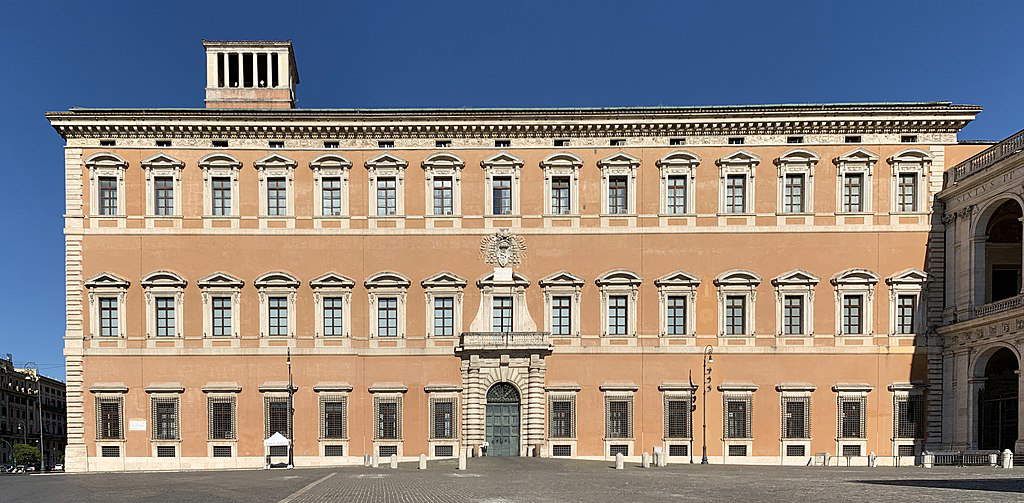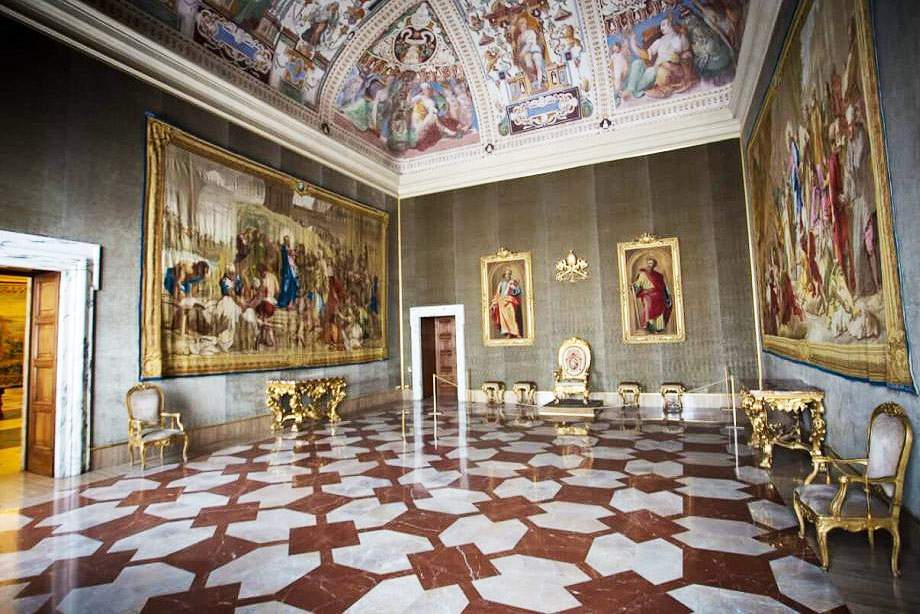Rome, Lateran Palace, the ancient residence of the popes, opens to the public
In Rome, the Lateran Palace, the home of the Bishop of Rome, opens to the public for the first time. The important palace began to welcome the public as of yesterday, Dec. 13: until now, the Lateran Palace had only been unveiled occasionally, so this is an important novelty, strongly desired by Pope Francis, who suggested opening to all what, for centuries, was the residence of the popes, before they moved to the Vatican. Located near the basilica of St. John Lateran, the Lateran Palace has a very ancient history, beginning on Oct. 28, 312, the day of the Battle of Ponte Milvio, during which Constantine’s armies defeated those of Maxentius. According to Christian tradition, Constantine, as a sign of gratitude to Christ (before the battle, a vision of the cross with the inscription “in hoc signo vinces,” or “you will win under this sign,” is said to have appeared to Constantine), donated to Pope Miltiades I the land that once belonged to the noble Lateran family and had been Constantine’s property for some years. In addition, the emperor granted permission to build on the area a sacred building, the future basilica of St. John Lateran. The basilica was consecrated on November 9, 318, and was dedicated to the Most Holy Savior by Pope Sylvester I.
The popes moved their residence at an unspecified time to the very Lateran buildings (although the palace was nevertheless occupied as early as the pontificate of Miltiades I). The Lateran complex was later damaged and looted over the centuries, but regained its luster in the Middle Ages, under the papacy of Innocent III and Boniface VIII. However, the Lateran Palace was abandoned following the “Avignon Captivity” (1309-1377): when the popes returned from France, in fact, the Vatican was designated as the place chosen to house the popes, not only because of the geographical aspects that made it safer, but especially because of the presence of Peter’s tomb. Despite this, the Palace continued to keep intact the prerogative of Patriarchium: all popes, in fact, once elected to the papal throne, would make their takeover in the Lateran.
The present Lateran Palace is owed to the urban redevelopment operations of the entire complex promoted by Pope Sixtus V (1585-1590), who carried out, in just five years of his pontificate, a series of renovation and building operations in the surrounding area and throughout the city, including the rebuilding of the Lateran Palace, designed by Domenico Fontana, who was inspired by the Farnese Palace of Michelangelo and Antonio da Sangallo the younger. In the end, however, Sixtus V was only able to stay at the Lateran for one year, and all his successors chose the Vatican as their home. The Lateran Palace is also known because the Lateran Pacts between Fascist Italy and the Holy See were made here in 1929.
 Lateran
Lateran Lateran
LateranVisitors will be able to move over an area of three thousand square meters, walk through ten rooms, the papal apartment, the private chapel, and the monumental staircase that leads directly into the basilica of St. John Lateran. And see, of course, the table where the Lateran Pacts were signed. All with a completely new layout, and a safe route accessible to all, through the second floor of the Apostolic Palace with entrance from Piazza di Porta San Giovanni. It will be possible to access the site only by guided tours, in groups of a maximum of 30 people, accompanied by the Missionary Sisters of Divine Revelation, who have been offering itineraries of art and faith in Rome for years. Reservations are required and payment must be made in advance, by credit card or cash. However, tickets can also be purchased on site if there is availability. The full ticket costs 16 euros (8 for access, 6.50 for the guide and 1.50 for earphones), reduced 13 (5+6.5+1.50). Reductions are for children and young people from 6 to 18 years old, students up to 25 years of age with Student Card, priests, religious men and women, seminarians and novices, university students up to 25 years of age (upon presentation of letter of request from the university), pilgrims (upon presentation of letter of request from the parish or diocese), employees of the offices of the Holy See or Vatican City State. No photos can be taken inside. For information you can visit the Palace website.
“The Church,” Pope Francis wrote last Feb. 20 to Cardinal Vicar Angelo De Donatis, “throughout the centuries has always worked to promote what is the fruit of the genius and mastery of artists, often a witness to experiences of faith and as instruments for giving honor to God. This was not only out of love for art, but also to safeguard the cultural heritage in the face of challenges and dangers that would deprive it of its function and value. This special responsibility, accompanied by careful solicitude in considering places, buildings and works as expressions of the human spirit and an integral part of the culture of humanity, has enabled my Predecessors to hand them down to different generations and to work to preserve them and make them available to visitors and scholars. It is a task that even today engages the Bishop of Rome in making usable the beauty and prominence of the properties and artistic heritage entrusted to his protection.”
“We know well the profound significance of this place,” Cardinal Vicar Angelo De Donatis emphasized, “and it would have been truly a pity not to open it to the public, because such a great good should be shared, should be offered to others. Who was very attached to this place, and even wanted to come and live there, was John XXIII. Pope Francis, for some time now, has been signing all his documents from the Lateran to highlight the link with the place that holds the chair of the bishop of Rome.”
“It is a great privilege and honor for us to carry out this service of evangelization through art,” commented the Missionary Sisters of Divine Revelation. “The one inside the Lateran Palace will be an exciting journey through the pages of the Church’s history, where art and faith intertwine in a luminous fruitfulness that manages to transmit wonder, wisdom and beauty to different generations.”
 |
| Rome, Lateran Palace, the ancient residence of the popes, opens to the public |
Warning: the translation into English of the original Italian article was created using automatic tools. We undertake to review all articles, but we do not guarantee the total absence of inaccuracies in the translation due to the program. You can find the original by clicking on the ITA button. If you find any mistake,please contact us.





























